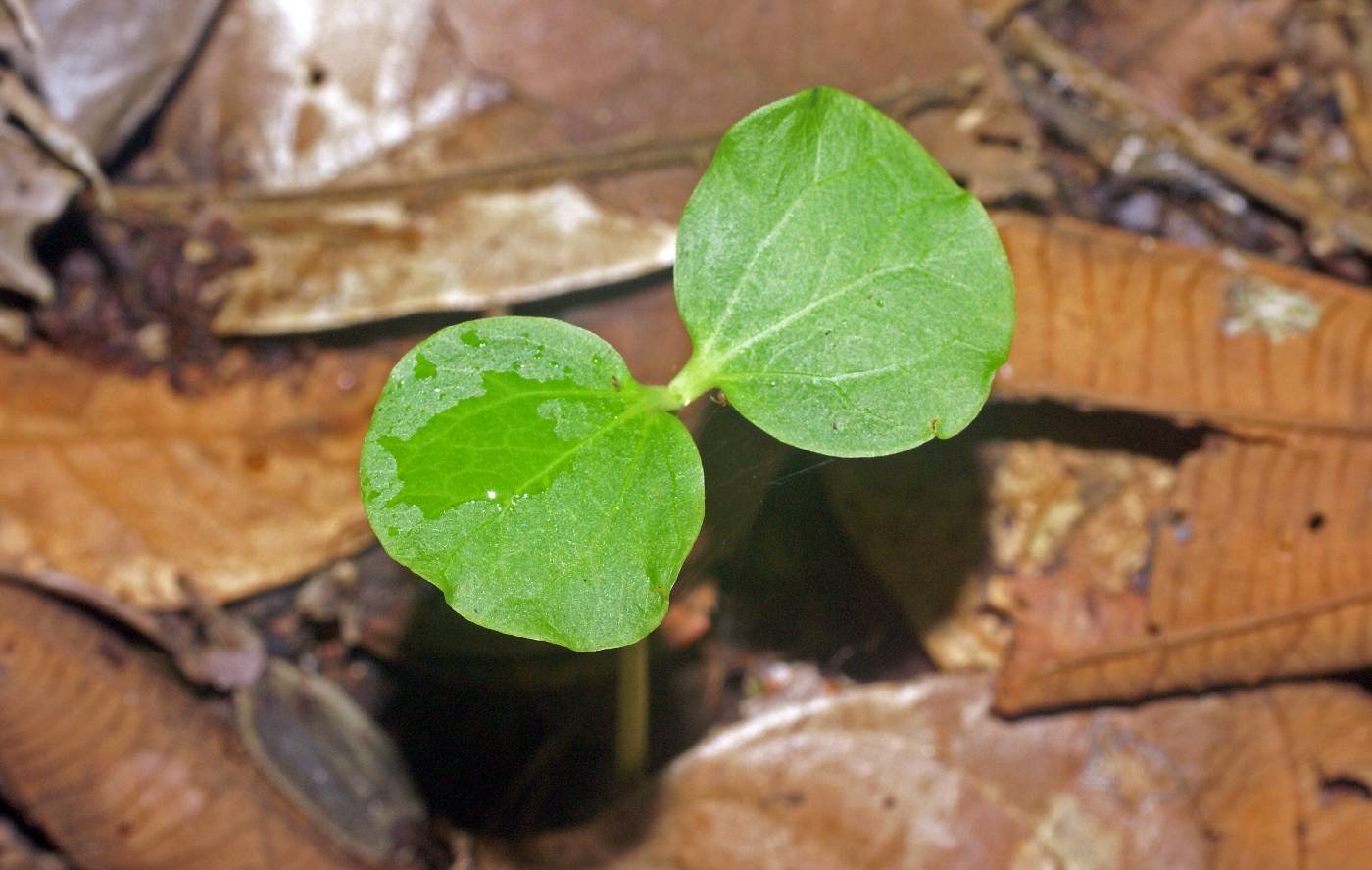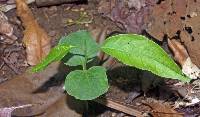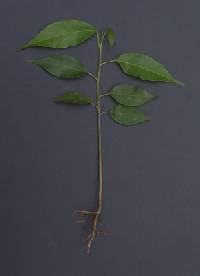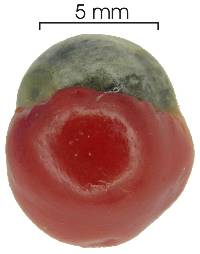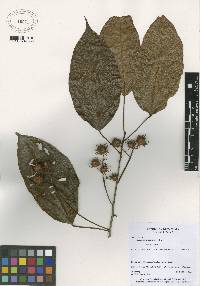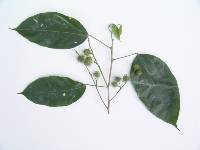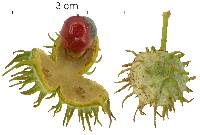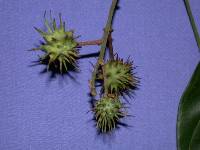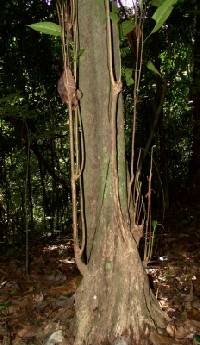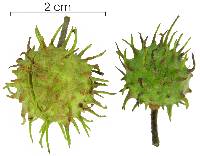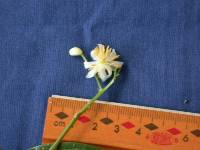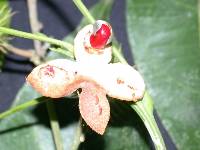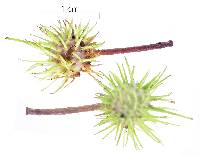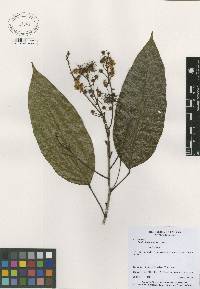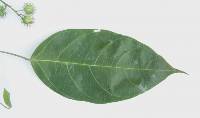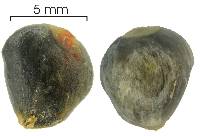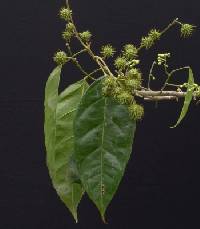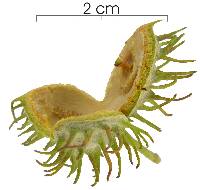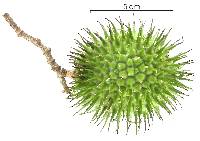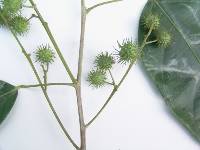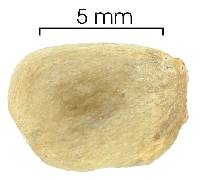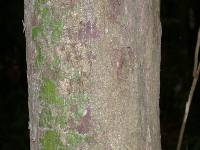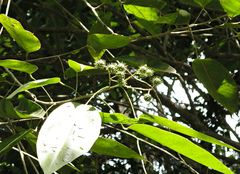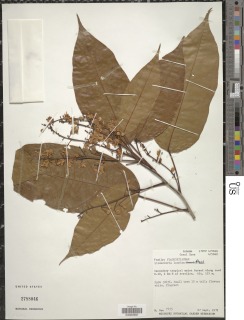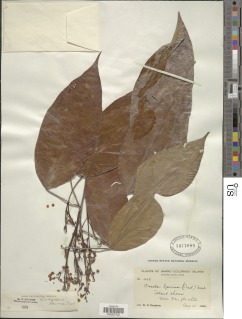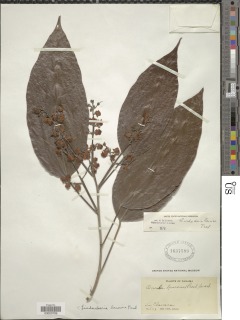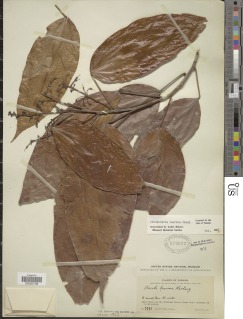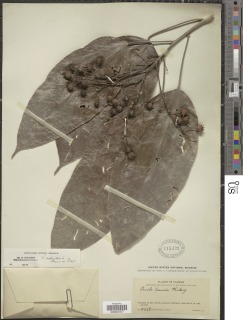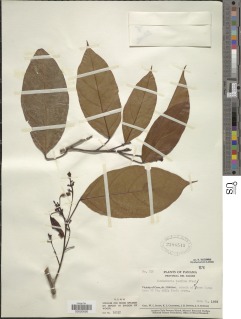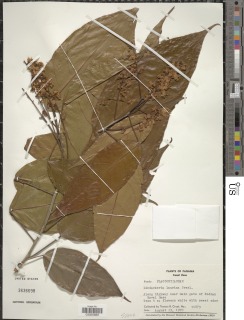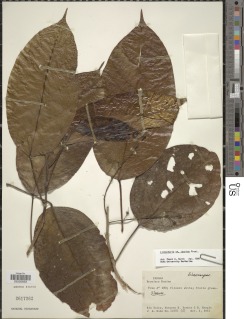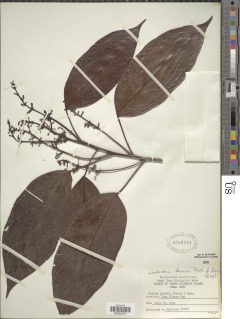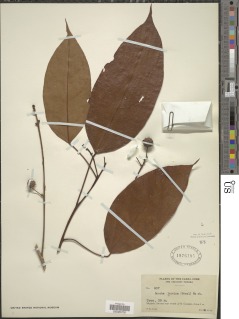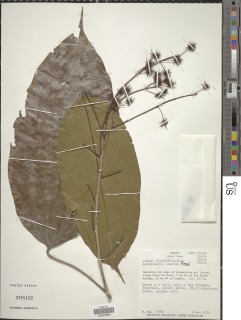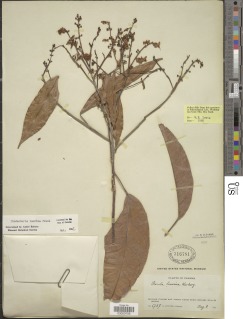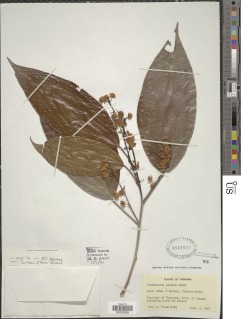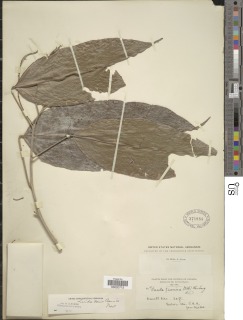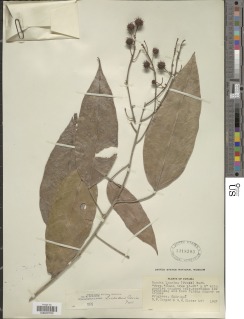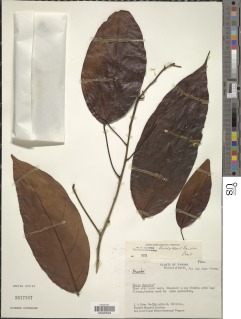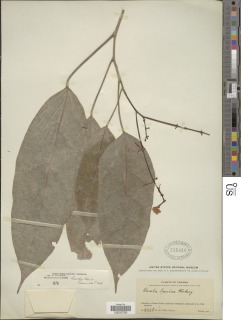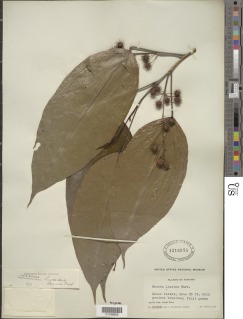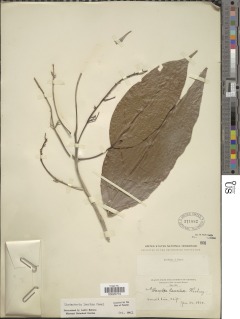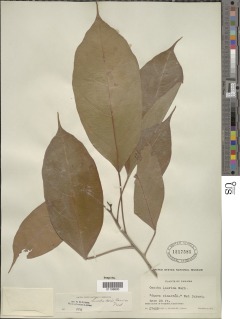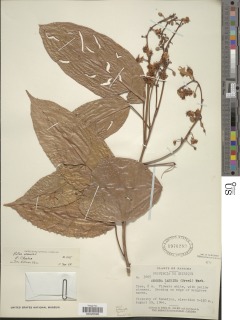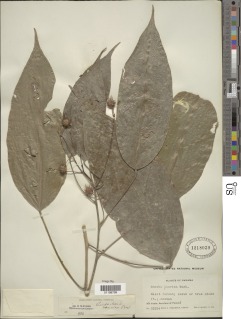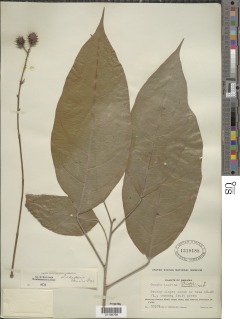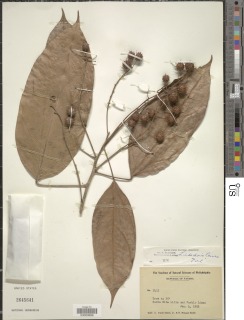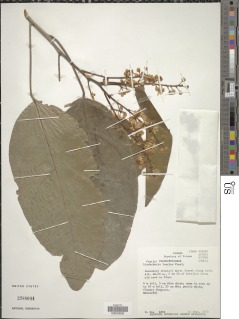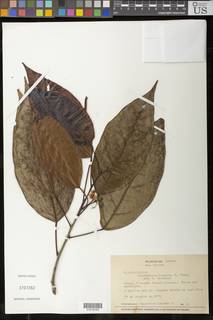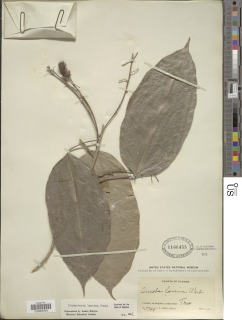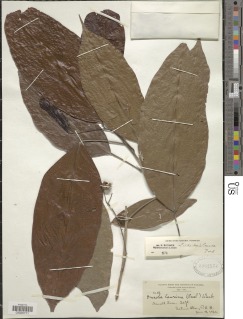

|
|
|
|
Family: Flacourtiaceae
carbonero, more...cucuyo, uvre
[Mayna laurina (C. Presl) Benth., moreOncoba laurina (Presl) Warb.] |
Description: A medium-sized tree with a straight trunk that often has small sprouts emerging from its base. The bark is gray, and small pieces are typically peeling free. The leaves are alternate, simple, fairly long, rounded at the base but with a long, pointed tip. Leaves are clustered toward the branch end, each held at a different angle, all hanging vertically. The petiole is long and swollen at both ends; the leaf is held at a sharp angle to the petiole. When a leaf is crumpled slightly and allowed to flatten, white lines form at all the folds. Reproduction: Flowers are small, white, in clusters at branch ends, opening from May to October. The fruit is a small capsule with long spines, green than maturing yellow; it opens into three valves, exposing a single seed with a red pulp. Fruits mature from December to March. Distribution: A roadside tree, abundant along Pipeline Rd. and other forested roads from Gamboa to Panama City. Not common in the forest, where it is largely restricted to clearings. Not known north of Soberania or in wet forests of Santa Rita or Chagres. Similar Species: The way the leaves are held, angled to the branch and to each other, in a loose cluster, is unusual, and this species should not be confused. The only other species in the area with leaves held similarly is LK cappfr Capparis frondosa, LK2 but the two species are quite different on close inspection. First, the white lines that form along leaf folds in Lindackeria are unmistakable. Moreover, Capparis is a small shrub, and it has both short and long petioles mixed on the same branches. Descripción: Árbol de 5 a 15 m de alto. Tronco con muchos rebrotes en la base. Corteza exterior gris y exfoliante en láminas pequeñas. Ramitas terminales surcadas y ligeramente angulares. Hojas simples y alternas, de 10-30 x 5-12 cm, oblongas o elípticas, con ápice acuminado, bordes enteros y base redondeada. Al estrujar las hojas de estos árboles se forman muchas líneas grises o blanquecinas en el haz, lo cual ayuda a identificar la planta en el campo. Pecíolo de 4-12 cm de largo, con un pulvínulo en cada extremo y doblado cerca del punto de inserción con la lámina, lo cual hace que las hojas cuelguen verticalmente. Flores blancas y aromáticas. Frutos en cápsulas espinosas, de 0.8-1.5 cm de diámetro, verdes, tornándose amarillos o anaranjados, dehiscentes en tres valvas al madurar. Semillas envueltas por un arilo rojo. Datos Ecológicos: La especie crece a bajas elevaciones, en bosques secos o húmedos. En Panamá se encuentra en las provincias de Chiriquí, Coclé, Colón, Darién, Panamá y la comarca de Guna Yala. Común en bosques secundarios de la parte central y del Pacífico en el Canal de Panamá, pero rara o ausente en bosques lluviosos del Caribe. Deja caer y repone sus hojas entre junio y julio. Florece y fructifica de diciembre a mayo. Especies Parecidas: A menudo se confunde con LK cappfr Capparisdastrum frondosum LK2 , pero en C. frondosum las flores son de mayor tamaño y el fruto es una silícua. En Lindackeria las hojas cuando se estrujan forman muchas líneas de color gris, lo cual no ocurre en Capparidastrum. Usos: Madera empleada en la fabricación de mangos de herramientas, leña y horcón. Los indígenas Guna de Panamá fabrican un remedio con las hojas para curar la mordedura de las serpientes. Oncoba laurina (Presl) Warb. Guavo cimarron, Carbonero, Uvre, Chopo cucullo, Amarillo carbonero Tree, 3-8 (15) m tall, 5-35 cm dbh; wood yellow; stems weakly striate, brown or with a thin gray flaky crust, the leaf scars 3-sided, raised. Petioles 5-11 cm long, canaliculate, somewhat swollen at apex; blades +/- oblong-elliptic, long-acuminate, obtuse to rounded at base, 10-30 cm long, 5-11 cm wide, glabrous, the midrib raised above. Panicles axillary and terminal, to ca 20 cm long; pedicels to 1.5 cm long; flowers ca 1.2 cm diam, conspicuous and sweetly scented; sepals 3, reflexed at anthesis, caducous; petals 6-12, white, blunt at apex; stamens numerous, unequal, exserted; anthers slightly bifid at apex; style 4-6 mm long; stigma shortly trilobate. Capsules 1-1.5 cm diam, covered with stiff bristles, dehiscing into 3 or 4 parts to expose seed; seed usually solitary, smooth, broadly ovate, ca 7 mm long, flattened on one side, gray-coated, with a shiny, bright red, lateral aril. Croat 6097, 7753. |
|
|
|

